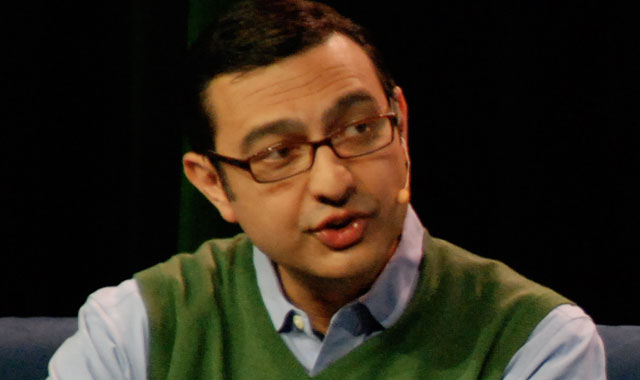 Most people outside of technology circles have never heard of Vic Gundotra. The charming, bespectacled 45-year-old with the flawless Californian accent might be mistaken for a professor or a paediatrician. Yet many of us have used one or more of the products he championed during his eight years at Google.
Most people outside of technology circles have never heard of Vic Gundotra. The charming, bespectacled 45-year-old with the flawless Californian accent might be mistaken for a professor or a paediatrician. Yet many of us have used one or more of the products he championed during his eight years at Google.
On 24 April, Gundotra announced his resignation from Google. Fittingly, he did so using Google+, the social network to which he dedicated the last five years of his life. As senior vice-president for Google+ and a member of CEO Larry Page’s exclusive “L-team” he was one of the most influential executives at the Internet giant.
As word of Gundotra’s exit spread, speculation began about the fate of Google+ and the thousand-strong team that he built around the product. Since the moment it was launched, Google+ has been dogged by scepticism about its ability to compete with existing social platforms such as Facebook and Twitter. Gundotra did himself no favours by repeatedly releasing vague and contradictory usage numbers.
As of late October 2013 — the last time such numbers were officially released — Gundotra claimed that Google+ had 300m monthly active users (MAUs). Compared to Facebook’s 1bn MAUs that seems medium sized, but it implies an audience roughly the size of the entire US. Twitter, which is nearly 10 years old, has only 240m MAUs.
Still, it’s hard to ignore the obvious differences in aggregate activity. In a typical month, Twitter will send more than 20 times as many visitors to the Mail & Guardian’s website, for example, than Google+. Facebook will send close to 100 times as many. Browsing around the Web, it’s rare to see a Google+ share button with even half as many “shares” as the Facebook or Twitter buttons next to it.
But to label Google+ a “ghost town” and speculate about its demise seems premature. It’s clear that there are many millions of loyal Google+ users (though the real number is probably closer to 30m than 300m), and it’s not at all clear that Larry Page sees the product as a failure. Some of the more odious members of the US technology press, which is often uncannily similar to gossip journalism, have already begun circling what they see as a walking corpse.
Rumours aside, it’s obvious that Google+ has lost its most important champion. In a global, publicly listed business the size of Google, having the chief executive’s ear is often vital to getting things done. Gundotra made full use of this influence to integrate Google+ into products across the company’s portfolio.
In some cases, like Google Search and Google Maps, this integration made sense and went smoothly. In others, most famously YouTube, it went extremely badly. By forcing users to sign up to Google+ to comment on videos, Gundotra invited one of the biggest community backlashes that the company had ever seen. To his credit he did not backtrack and the notoriously revolting comments below YouTube clips have actually improved as a result.
Many argue this brute force approach to integration has inflated Google+ usage numbers and put many people off the product. That may be the case but I believe Gundotra’s efforts to centralise and rationalise Google’s login systems have yielded significant benefits to the entire business. I have several different Google accounts and switching between them, which used to be incredibly tedious, is now a pleasure.

It’s also clear that Google+ raised the bar for visual design and user experience across the entire company. Since its launch in 2011, Google+ has always been the most attractive and usable product in the stable. Since then blockbuster products such as Gmail and Google Drive have been given the same treatment and the results are exceptionally good.
Most of the criticism around Google+ stems from the fact that it has “failed” to be the “Facebook killer” that many were predicting. But that’s an extremely narrow view of success and one that ignores Facebook’s own struggles to remain relevant and profitable. I’m sure Gundotra would have liked to “beat” Facebook but I’m not convinced that was even in his top five goals.
Regardless of whether Google+ fails as a product, Gundotra managed something quite extraordinary: he changed the culture of a huge multinational corporation, one that employs some of the smartest and most opinionated people on the planet.
Thanks to Gundotra, Google is now a social company. The social gene has been grafted into its DNA. Whether the surgery happened early enough and whether it will prove a success in the long run remains to be seen. — (c) 2014 Mail & Guardian
- Alistair Fairweather is chief technology officer at the Mail & Guardian
- Visit the Mail & Guardian Online, the smart news source

